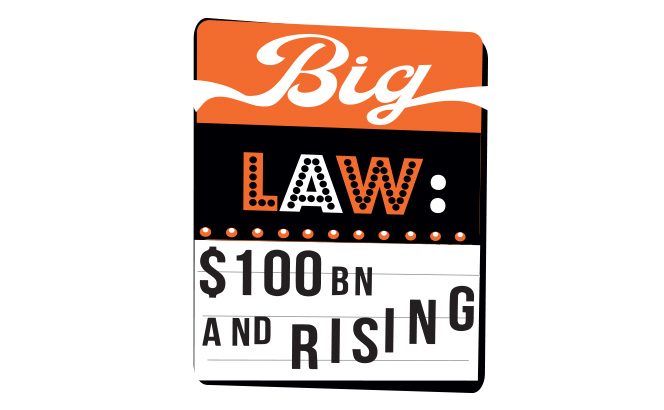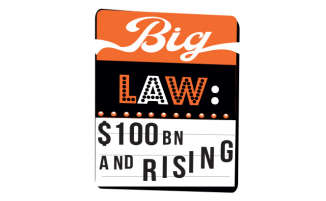In the summer of 2017 the world’s top law firms were looking at their next financial year with scant optimism given a turbulent geopolitical backdrop and uncertain economic headwinds. As it turned out, driven by a robust global economy, bullish investors and a re-born enthusiasm for cross-border transactions, the 2017/18 season proved kinder than forecast, equating to one of the stronger years seen by the Global 100 since the banking crisis recast the industry.
Assisted by consolidation, the 100 drove their collective top line up $6bn to reach $104.4bn. US-centric firms heavy on marquee transactions and private capital made the best showing – it was a relatively subdued 12 months in the vast US disputes market, hitting firms overly exposed to it.
Nevertheless, underlying revenue per lawyer (RPL) once again stalled at $793,000. Consider the implications of that – the most accurate measure of underlying industry productivity has not only barely changed since 2007, it is worse among the largest 25 law firms than for the rest of the table. Throw in inflation and there are ominous signs of stress in top-end commercial law; at a time of surging demand from companies for cross-border advice, elite law firms are leaking market share to in-house teams and being forced to slash margins through tougher panels.
In the round it also was an indifferent year for the traditional elites in New York and London. Cravath, Skadden, Cleary Gottlieb, Sullivan & Cromwell – a group of ultra-prestigious Wall Street brands had sluggish or poor years and none of that group look robust on a five-year perspective. The decades-spanning loss of dominance of Manhattan leaders both in the US and globally continues.
Global law firms as we know them were built on the foundation of a globalising investment banking sector but that cycle is well into diminishing returns.
In their place a group of firms have managed a long-time boom, thrown into sharp relief through 2017. Born outside of Manhattan they hail from California, Chicago or Boston, often have credible contentious teams and have reached an accommodation between expansion and a relatively tight practice focus. None are lockstep and all spend large sums to recruit top talent.
The other aspect that typically unites them is an affinity with sponsors over banks and plcs. The latter point is hard to overstate. Global law firms as we know them were built on the foundation of a globalising investment banking sector but that cycle is well into diminishing returns. Banks are not great clients any more. The new kings of law are fuelled by private equity houses in their increasingly diverse guises and avoid panels like the plague.As such Latham & Watkins, Ropes & Gray and Goodwin Procter simmered nicely alongside New York’s Milbank, White & Case, Willkie Farr and Weil Gotshal, as the usual suspects of US decline at least delivered consistency. And none typifies the disruptive US challenger better than Kirkland & Ellis, the industry phenomenon we dedicate our cover feature to this month. Can anything stop the world’s largest law firm after having put $860m on its top line in just two years? For what it’s worth, we reach clear conclusions.
Let us be explicit on these trends: top-end global law is being remade. The sign-off to our Global 100 commentary last July has aged as well as anything Legal Business has written in the last five years: ‘The age of the $10m super-rainmaker is upon us. There are no easy answers for global firms that cannot play that game.’
How are those answers coming?
To see our Global 100 coverage, please click here
To see last year’s Global 100 leader, please click here













